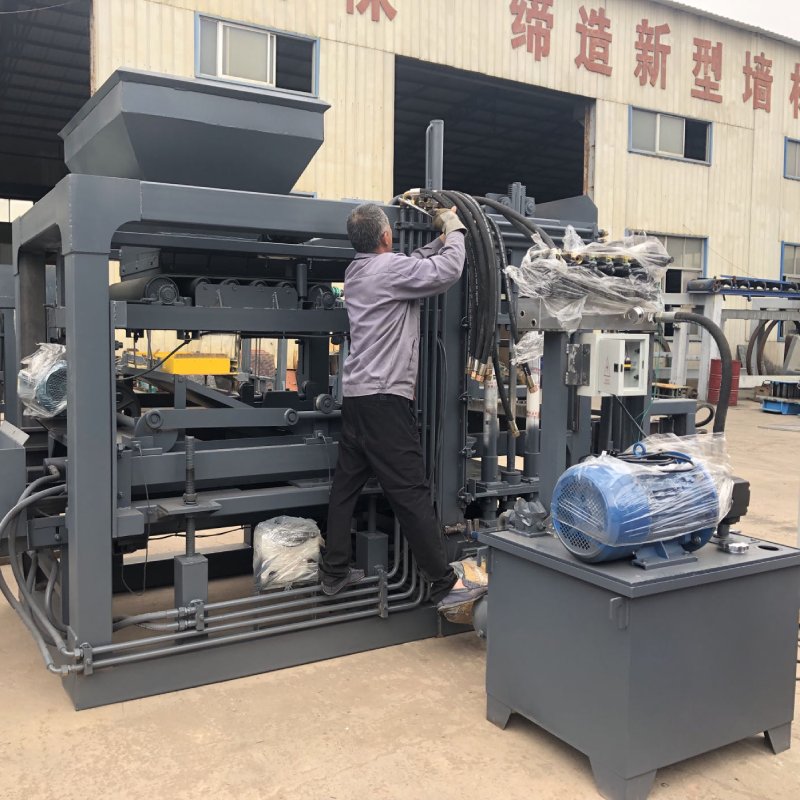
Image source Aiwei Block Machine
The Evolution of Brick Block Machines: Innovations and Trends
Section 1: The Early Days of Brick Block Machines
In the early 19th century, brick block machines were operated manually, requiring a significant amount of labor. We delve into the rudimentary methods and the first attempts at mechanization that laid the foundation for future innovations.
Section 2: The Advent of Automated Machines
The 20th century saw a revolutionary shift in brick block machine technology with the introduction of automated machines. We discuss the pivotal developments that allowed for increased production capacity and consistency in brick and block manufacturing.
Section 3: Modern Innovations in Brick Block Machines
3.1. Hydraulic Presses and Vibrating Tables
The incorporation of hydraulic presses and vibrating tables transformed the way bricks and blocks were manufactured. These technologies improved compression and compaction, resulting in stronger and more uniform products.
3.2. Interlocking Blocks
The concept of interlocking blocks brought about a paradigm shift in construction. We explore how this innovation increased the speed and ease of building, while also reducing the need for mortar and skilled labor.
3.3. Mobile Brick Block Machines
The development of mobile brick block machines has brought construction to remote areas and disaster-stricken locations. We discuss how these machines are making a difference in humanitarian and development projects.
Section 4: Sustainable Brick Block Machines
Sustainability is a growing concern in the construction industry. We examine how brick block machines are evolving to meet eco-friendly standards. This includes the use of alternative materials, reduced energy consumption, and minimized waste.
Section 5: The Role of Artificial Intelligence and Automation
In recent years, artificial intelligence and automation have started to make their mark on brick block machine technology. We explore how AI and automation are enhancing production efficiency, quality control, and predictive maintenance.
Section 6: Emerging Trends in Brick Block Machines
6.1. 3D Printing of Bricks and Blocks
The advent of 3D printing in construction has begun to influence brick block machines. We discuss the potential for 3D printing to revolutionize the production of customized bricks and blocks.
6.2. Smart Brick Block Machines
The integration of IoT technology is giving rise to smart brick block machines. These machines can monitor their own performance and communicate with other equipment on the construction site, enhancing efficiency and safety.
6.3. Green Construction and Sustainable Materials
With an increasing focus on sustainability, we explore how brick block machines are adapting to use alternative, environmentally friendly materials, including recycled plastics and low-carbon cement.
Section 7: Case Studies of Innovative Projects
This section features case studies of projects that have successfully utilized cutting-edge brick block machines, showcasing the real-world applications and benefits of these innovations.
Section 8: Challenges and Future Prospects
While brick block machines have come a long way, they still face challenges, including high capital costs and the need for skilled operators. We discuss these challenges and look at the potential future prospects and developments in the field.
Conclusion
The evolution of brick block machines is a testament to human ingenuity and the ever-advancing technology in the construction industry. From humble manual operations to sophisticated, automated systems, these machines have paved the way for efficient and sustainable construction. The emerging trends, including 3D printing, smart machines, and green materials, promise to further transform the industry, offering innovative solutions to age-old challenges. As we continue to embrace technology and sustainability, brick block machines are set to play an even more pivotal role in the construction landscape of the future.
